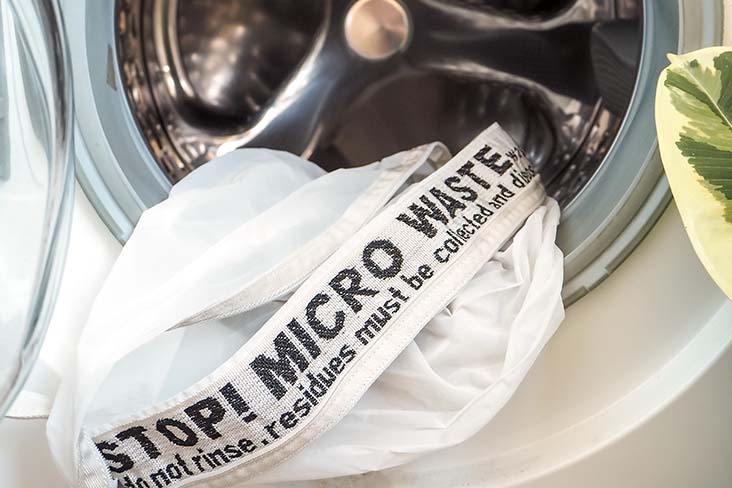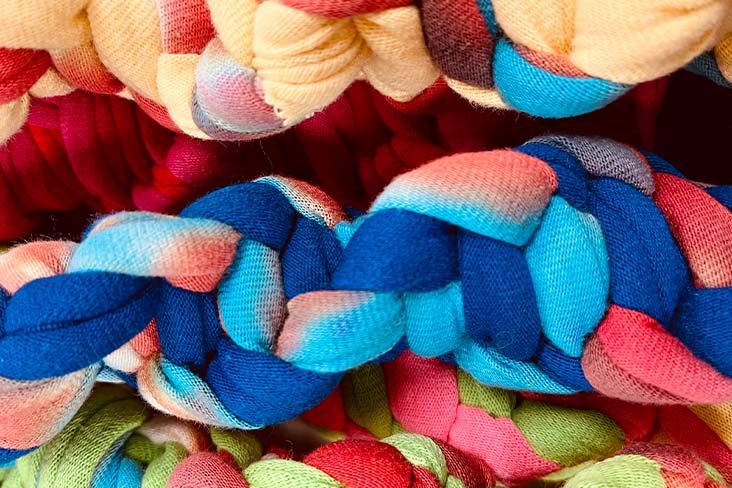Ask a runner, and they may say that their sport is good for the environment. After all, it doesn’t take much equipment. Just pull on your top, lace up your shoes and head out into the great wide open.
But think about that top – what’s it made from? Nonrecycled polyester? And those shoes – how much petroleum went into making those springy midsoles? And what will happen to them once you’ve worn them out?
Just like with every other aspect of life, from road trips to the food in your fridge, running is increasingly coming under the spotlight regarding its eco-credentials and its impact on the Earth.
The good news is, there are easy ways to reduce your carbon footprint on the running path.
Go plogging
A marriage of the Swedish phrase “plocka upp” (translation: to pick up) and the English word “jogging,” plogging means trash collecting as you run. Whether you head out solo with a pair of salad tongs and a trash bag or organize a group plog, it adds extra motivation to the run and the benefits to your local area are immediately apparent.

Caitlin Conner, CEO and founder of the nonprofit Be More Adaptive, regularly goes plogging in Houston. Her local coffee shop hosts a 5K plog (walkers welcome too) every Saturday.
“After an hour of plogging down our Houston bayou path, we wash up and join together for coffee,” she says. “We’re sharing an activity that has us taking care of shared land. We really could use more of that in the world.”
Reduce your microfiber output
Running clothing is often made from plastic-based fibers such as polyester, which sheds tiny plastic microfibers when washed. These microfibers have been found in rivers, seas, U.S. national parks and even snow in the Arctic.
Fish and marine mammals sometimes ingest these plastics, thinking they’re food. A 2019 study by Ocean Wise® estimated the average U.S. household releases 533 million microfibers to wastewater plants a year.
The easiest way to combat your microfiber release rate is to wash your gear less often. If it’s not too sweaty or dirty, just hang it up to dry and grab for your next (perhaps solo) run.

When it is time for a wash, keep the cycle at a low temperature to reduce shedding, and use a microfiber-catching device such as a Guppyfriend® bag or the Cora laundry ball. An even better option is to install an external microfiber filter to your washing machine to collect those microscopic fibers.
When environmental scientists at the University of Toronto tested one called the Lint LUV-R, they found it captured an average of 87% of microfibers released in the wash (compared to 26% captured by the Cora Ball).
Unfortunately, none of these options is a perfect solution. When cleaning out your bag, ball or filter, the stray fibers are not recyclable. The best bet right now is to collect them in a container that can seal (so the fibers can’t blow away) and wait until it’s full before disposing in the trash – since these fibers are tiny, it will take a long time to fill a jar.
Wear sustainably produced gear
Running brands are starting to take note of consumers’ demands for a more sustainable way of manufacturing long-lasting running apparel. Some are finding new ways to create clothes and shoes using sustainable and recycled materials.
When shopping, look for a tag that says the gear is certified by Bluesign®, a company in Switzerland that assesses the sustainability of products based on the materials they’re made from and the resources used in the manufacturing process. They will grant their seal of approval (a blue rectangle with their logo) only to clothing that meets their stringent eco-requirements, including that at least 90% of the textiles used in production come from their approved list. REI, Patagonia® and Arc’teryx, among others, sell Bluesign-approved gear.
For shoes, there are now many great options made with recycled or otherwise more sustainable material. Newer brands include Ecoalf, a Spanish company that turns trash found in oceans and rivers into foam and yarn to make cushy knit sneakers, but these days even giants such as Reebok and Adidas® use plant-based materials or recycled plastic in many models. Read the fine print on the shoe you’re considering.
Tina Muir, host of the podcast Running for Real and co-author of the upcoming book Becoming a Sustainable Runner, likes the example set by shoe company Allbirds, which prints the carbon footprint in kg CO2 per item on each product it creates.
“By demanding companies we love share their numbers, they’ll be motivated to drive that number down lower and therefore have a bigger impact than us individually abstaining from their brand,” Muir says.
Repair your wardrobe
One of the simplest and best ways to be a more sustainable runner is to wear the gear you have for longer. The quick-fix culture we live in means many of us throw away items that have years more use in them, as we don’t have the time or expertise to fix a ripped seam.
The skills to repair minor tears are easily YouTube-able, and if you don’t feel up to attempting a running stitch, select companies, including Patagonia and Osprey, offer free repair services on their products, whether you purchased them recently or back in the days when running was known as “jogging.” Or try your local dry cleaner. Many have tailors on staff who can provide inexpensive repairs.
If you can’t repair it, repurpose it
If your T-shirt has finally reached the end of the road, it probably doesn’t fit neatly into any recycling stream, especially if it’s made from mixed fibers. And it may be too gross to donate. But that doesn’t mean there’s no use for it. Why not repurpose it into another item, such as a bandana, sweat band or cleaning rags?
It’s also easy to turn old tees into dog toys. BARK, a Subaru partner, has a tutorial here.

Shoes are trickier to dispose of. Of the over 24 billion pairs produced worldwide every year, 90% end up in landfill. With running shoes, ask your local running store if they accept old pairs or can recommend an organization that does. Some companies or shops run donation programs that find new homes for gently used shoes. Others may be able to take your beat-up pairs and recycle them into things such as playground surfaces.
Drop off any brand of shoe at a participating Nike® retail store and the company will repurpose the materials. If you order a pair of Asics®, the company encourages you to repack the box with a gently used pair and send it back using a prepaid shipping label.
This summer, running gear company On is launching a shoe subscription program: Get a pair of its newly designed, fully recyclable Cloudneo shoes in the mail; when they’re worn out, request a new pair and send back the old, which the company will break down to turn into a new pair for someone else.
And if you have the cash, try the Shoes and Footwear Zero Waste Box™ from TerraCycle®, a business that collects hard-to-recycle items and transforms them into new products. Multiple pairs of shoes fit in one box, so you can split the cost with friends or members of your running club.
Choose your races thoughtfully
Muir says runners should carefully consider which races they enter, especially when running abroad. “This doesn’t mean never traveling to a race again, but being thoughtful and conscious with the choices we make,” she says. “It means exploring our local areas as much as we can, and selecting which races we travel to based on their approach to sustainability and whether we can travel by public transport or car over air travel, and offsetting our trip impact.”

Look for a race certified by the Council for Responsible Sport, which has a robust list of recommendations for race directors. Ideally, race signage won’t be printed with the date of the event, so the same signs can be reused year after year. Race shirts should be made from sustainable materials and not come individually wrapped in plastic. Biodegradable paper cups at water stations along the course are better than plastic.
Starting in 2019, the Bank of America Chicago Marathon® went even further by using bamboo cups at all aid stations. At the end of the race, the cups were composted along with runners’ banana peels.





